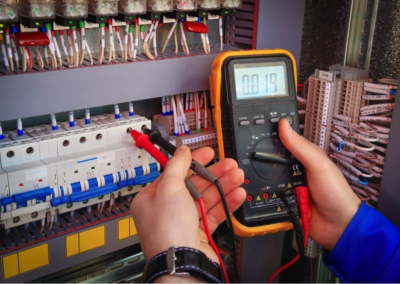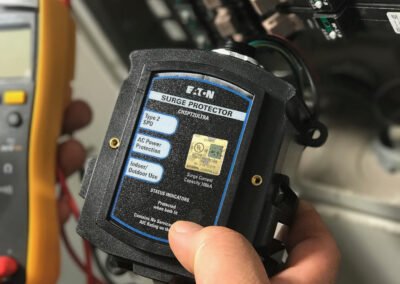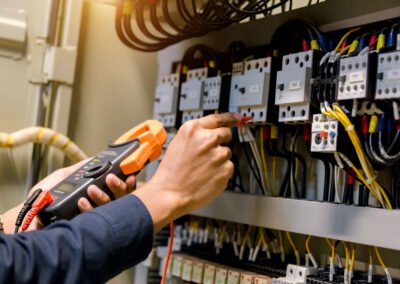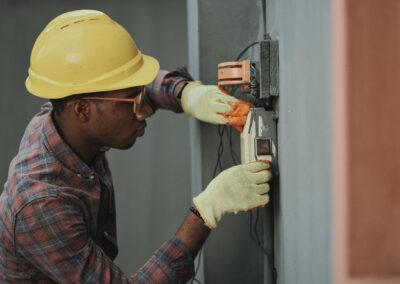Emergency Power Solutions, Mississauga
In commercial facilities, having a reliable source of emergency power is essential to ensure business continuity during power outages.
Request InformationSchedule Service
Emergency Power Solutions, Mississauga
If you’re a commercial property owner considering installing an emergency power system in your property, here are a few things you need to know and consider:
- Assess Your Power Needs: Before installing an emergency power system, you should assess your facility’s power needs. This will help you determine the appropriate size and type of system required to keep your critical equipment and systems operational during power outages.
- Choose the Right Type of Emergency Power System: There are various types of emergency power systems, including backup generators, automatic transfer switches, and uninterruptible power supplies. Each type of system has its own benefits and drawbacks, and the best option for your facility will depend on your specific needs.
- Obtain Permits and Approvals: Installing an emergency power system typically requires obtaining permits and approvals from local authorities. It’s important to ensure that you comply with all local regulations and codes to avoid any legal or safety issues.
- Hire a Qualified Professional: Installing an emergency power system is a complex and potentially dangerous task that requires the expertise of a qualified professional. It’s important to hire a licensed and experienced contractor who specializes in emergency power systems to ensure that the installation is done safely and correctly.
- Test and Maintain the System: Once the emergency power system is installed, it’s important to test and maintain it regularly. This will ensure that it’s always ready to perform during power outages and will help prolong its lifespan.
- Have a Plan in Place: Finally, it’s important to have a plan in place for how to use the emergency power system during a power outage. This includes identifying which equipment and systems need to be powered and who will be responsible for managing the system during an emergency.
Installing an emergency power system in your commercial property can provide peace of mind and ensure business continuity during power outages. By following these tips and working with a qualified professional, you can install an emergency power system that meets your specific needs and keeps your facility operational during power outages.
Don’t let power outages affect your business operations. Invest in an emergency power system from Made Electric and have peace of mind knowing that your critical equipment and systems will remain operational during power outages. Contact us today to learn more about our emergency power solutions for commercial facilities! Our electricians are skilled and knowledgeable, and we are proud to provide quick and efficient service in Mississauga and across the GTA.
Frequently Asked Questions (FAQs)
What is the cost of installing an emergency power system?
The cost of installing an emergency power system will depend on several factors, including the size of the system, the type of equipment and systems that need to be powered, and the location of the facility. Reach out to us today for an estimate of the cost to install an emergency power system for your commercial property.
How often should I test and maintain my emergency power system?
It is recommended to test your emergency power system on a regular basis to ensure that it is operational when needed. Testing should be done at least once a month to verify that the generator starts and runs properly. Additionally, you should have a professional perform annual maintenance, including fuel testing, oil changes, battery inspections, and load bank testing.
What permits are required to install an emergency power system?
All electrical projects in Canada require a permit. Here at Made Electric, our experienced electricians can obtain permits on your behalf to ensure that the installation process goes smoothly, and is completed in compliance with the Electrical Safety Authority’s (ESA) codes and regulations.




